by Clarity by Rego
Share
- What are the 5 Stages of Project Management?
- What are the 5 Stages of Project Management?
- 1. Initiation Stage: Create the Foundation for Success
- 2. Planning Stage: Turn Your Vision into a Detailed Plan
- 3. Execution Stage: Where the Work Gets Done
- 4. Monitoring and Controlling Stage: Keep Everything on Track
- 5. Closure Stage: Finish Strong
- Conclusion: Deploy the 5 Stages of Project Management for Project Success
- Additional Resources
- Get Notified of Updates.


Are you a project manager struggling to keep your projects on track?
The 5 stages of project management is a structured approach to break down complex projects into manageable steps. It is a proven method that will help you improve project organization, team coordination, resource allocation, risk management, and drive high-quality deliverables.
In this actionable article, we will explore each of the 5 stages of project management in detail. Additionally, we’ve harnessed the expertise of seasoned project managers to provide you with insightful Best Practice Questions for Project Managers for – and expert advice – to improve outcomes at each stage.
What are the 5 Stages of Project Management?
 Modern projects follow a process called the “project life cycle.” The Project Management Institute (PMI) states, “The project life cycle is a basic framework that Project Managers and teams use to effectively structure projects and set them up for success. Within the project life cycle are a handful of different phases — or collections of logically related project activities that culminates in the completion of one or more deliverables.”
Modern projects follow a process called the “project life cycle.” The Project Management Institute (PMI) states, “The project life cycle is a basic framework that Project Managers and teams use to effectively structure projects and set them up for success. Within the project life cycle are a handful of different phases — or collections of logically related project activities that culminates in the completion of one or more deliverables.”
To optimize project success, you can utilize the 5 Stages of Project Management:
- 1
Initiation: Assess project value, define project goals, identify stakeholders.
- 2
Planning: Create a detailed project plan, allocate resources, set timelines.
- 3
Execution: Implement plans, manage team activities, deliver work.
- 4
Monitoring and Control: Track progress, manage changes, maintain quality.
- 5
Closure: Complete deliverables, document lessons learned, release resources.
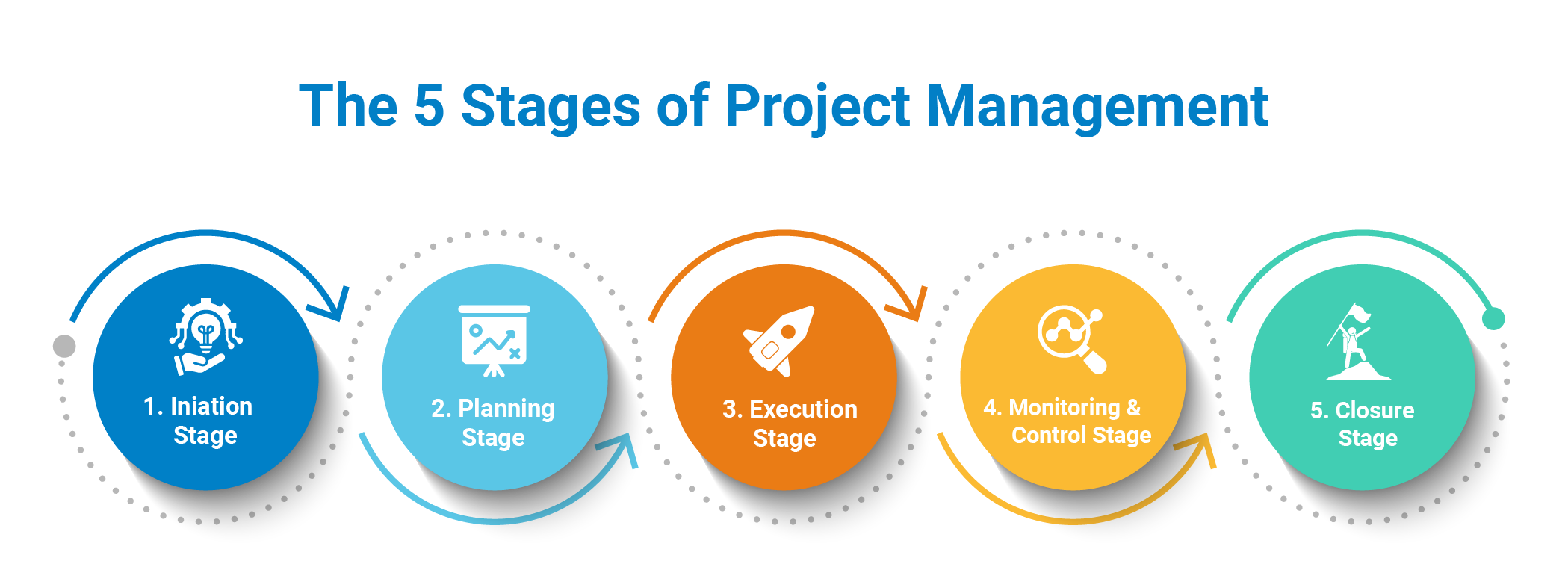
Let’s explore each stage to help you get started today!
1. Initiation Stage: Create the Foundation for Success
During this stage, you will explore whether an idea is worth turning into a full-blown project. You’ll evaluate the value it can bring to your organization and determine whether it’s worth the time, budget, and effort.
🚩 The initiation stage is the most important stage!
If you rush past it – or skip it altogether (yikes!) – you risk wasting time, money, and effort on the wrong project. Done right, it will set your project up for success and get the correct people involved early, which means smoother approvals and better buy-in later.

Key Steps and Deliverables
Best Practice Questions for Project Managers
Get curious, and ask big questions to make sure you’re solving the right problem before diving in. Start with “why” to get laser-focused on the project’s purpose.
- Why is this project important? What value does it bring?
- Who are the stakeholders, decision-makers, and contributors?
- What specific problem are we solving? What benefits are we trying to achieve? What show-stopper risks do we know about? What types of resources are needed?
- Do we have strong stakeholder buy-in? If not, what needs to change? Is it simply a lack of communication about the purpose and benefits, or does the focus of the project not meet their needs?
- Where will this work take place?
- When does this need to be completed – and is that realistic?
Don’t be afraid to ask follow-up questions. If you get a blanket response like, “We just need this done,” your next question should be, “Why now?” or “What happens if we don’t?”
Expert Advice
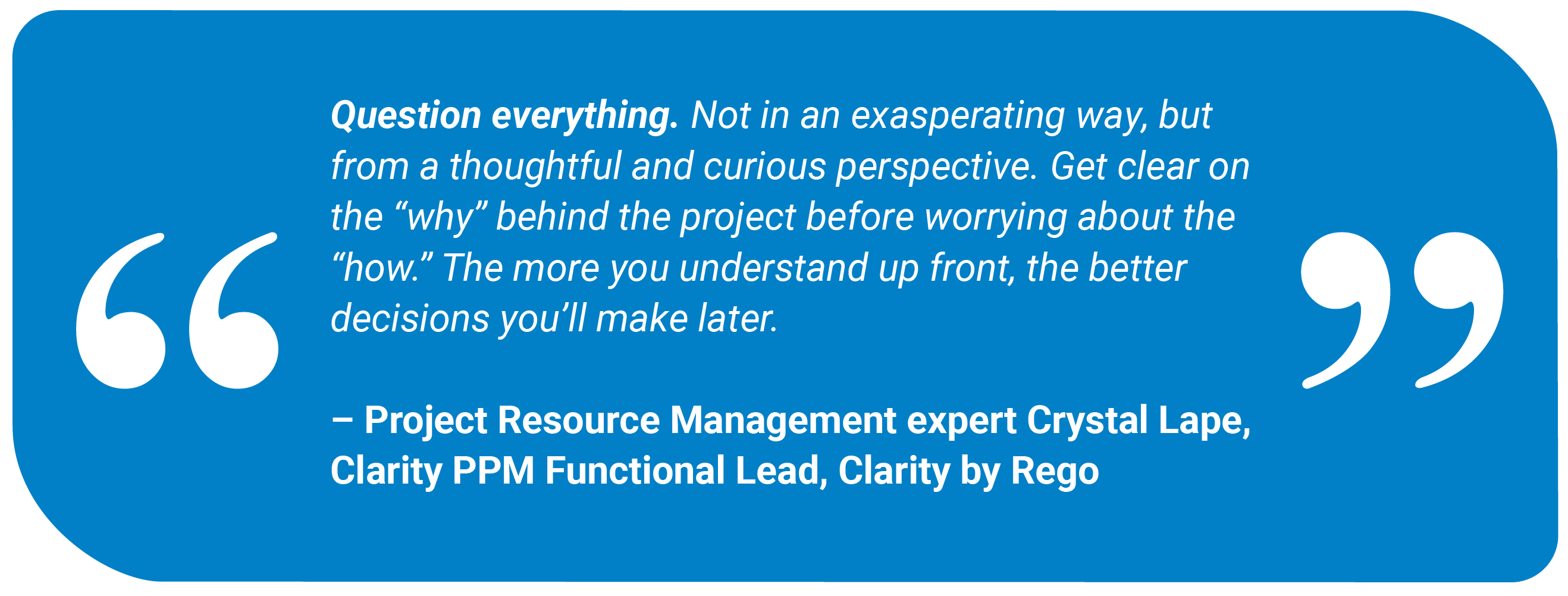
2. Planning Stage: Turn Your Vision into a Detailed Plan
In the Planning Stage, the project vision transforms into actionable steps. You’ll develop a detailed project management plan that includes scope, schedule, budget, quality, resources, risk, and communication plans. This plan will guide all actions in the project.
There’s no denying it – this stage is hard work. But careful planning can prevent costly mistakes and reduce uncertainty during execution. It will help you set clear expectations, minimize or avoid surprises, and keep the project on track. Even when priorities shift, your strong plan will empower you to adapt without losing momentum. Maintain excellent communication throughout this stage, and you’re off to a great start!

Key Steps and Deliverables
Best Practice Questions for Project Managers
Great questions can turn into a great plan. Focus on clarity, alignment, and risk.
- To avoid confusion and scope creep, is the project scope approved by all key stakeholders?
- Are the resource estimates realistic? Are those resources available?
- What’s the timeline and key milestones? Are we prepared to adjust as needed?
- What risks threaten the timeline, budget, or deliverables?
- Are critical tasks and dependencies clearly identified?
- How to best measure and report progress? (CSFs and KPIs)
- Who needs updates, and how often? (Stakeholders and team members)
Expert Advice
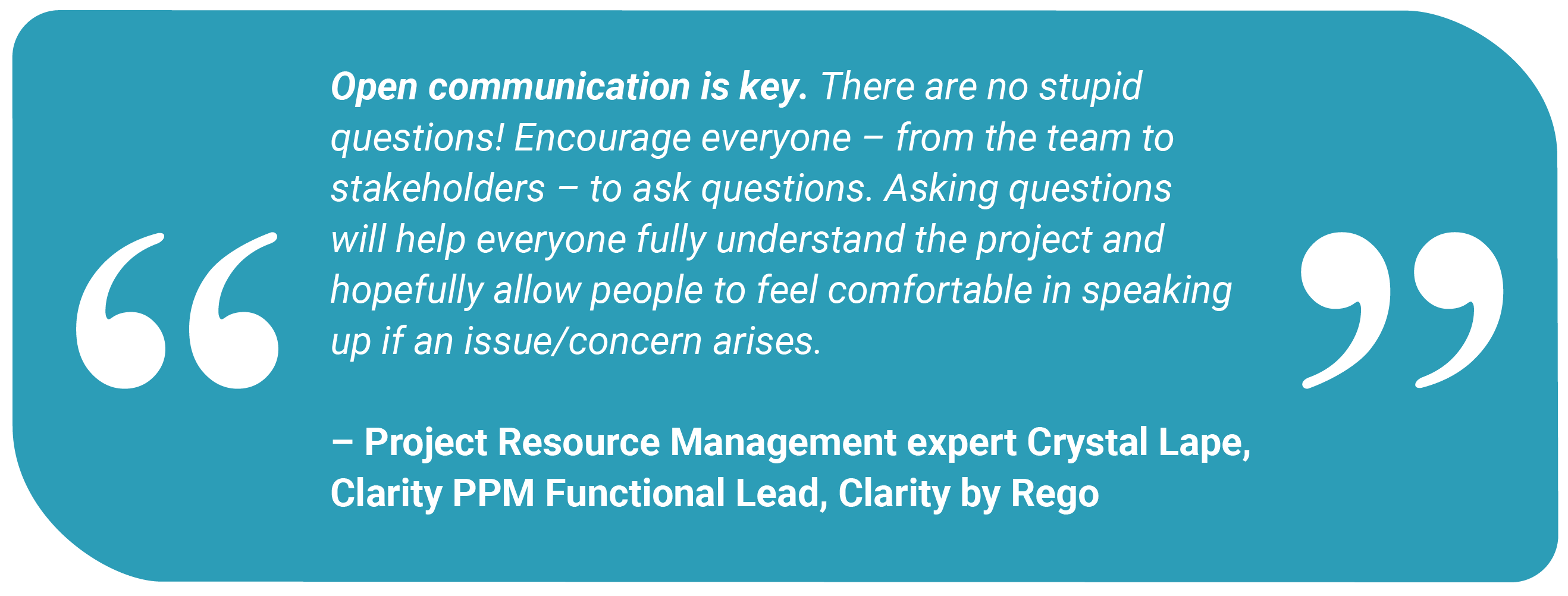
3. Execution Stage: Where the Work Gets Done
The Execution Stage is where the “real work” of the project takes place. The project plan is put into action, and the team works to achieve its objectives.
To succeed, the team must have strong collaboration, clear communication, and the ability to adapt as things change. This prevents delays and budget overruns, delivers quality work on time, fosters positive stakeholder relationships, and drives momentum for project completion.

Key Steps and Deliverables
Best Practice Questions for Project Managers
- Does this project plan meet the vision/goal for this project?
- What is the status of the project?
- Is the project accomplishing its defined goals? Do those goals need to be redefined?
- Is the project fulfilling the key milestones?
- Are team members clear about their roles and responsibilities?
- What are the project resources allocations, actuals, and forecasts – and do they still align with the estimates?
- Is the project progressing according to schedule?
- What risks have emerged, and how are they being managed?
- How often am I communicating with stakeholders and the team?
Expert Advice
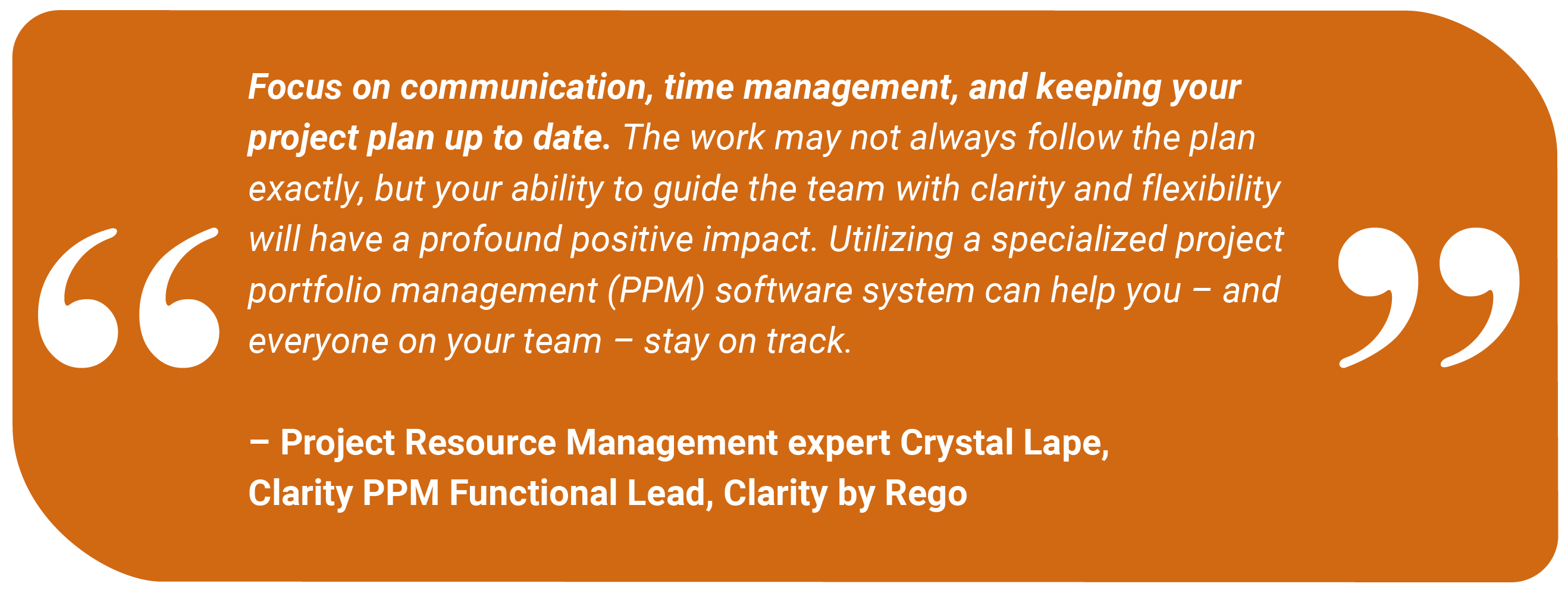
4. Monitoring and Controlling Stage: Keep Everything on Track
The Monitoring and Controlling Stage runs simultaneously with execution. It’s an essential tracking system you can use to oversee progress, make necessary adjustments, and ensure the project stays on course. It can prevent small issues from exploding into big problems.
The key to effective monitoring lies in establishing clear metrics and maintaining consistent tracking practices. This creates a feedback loop that enables data-driven decision-making and keeps your project aligned with its objectives.

Key Steps and Deliverables
Best Practice Questions for Project Managers
- Compared to our baseline metrics, how is the project performing?
- Are we meeting the planned milestones?
- Are the deadlines still accurate?
- Is the project staying in scope?
- Are the resources working on the right tasks, and tracking time accurately?
- Do our actuals match the forecasts?
- Are there any risks? Are they being mitigated with the risk management plan?
- Is the communication strategy with stakeholders and the team on track and effective?
- How will new requests affect the success, scope, and timeline of the project?
- In all areas of the project, what could be improved?
Expert Advice
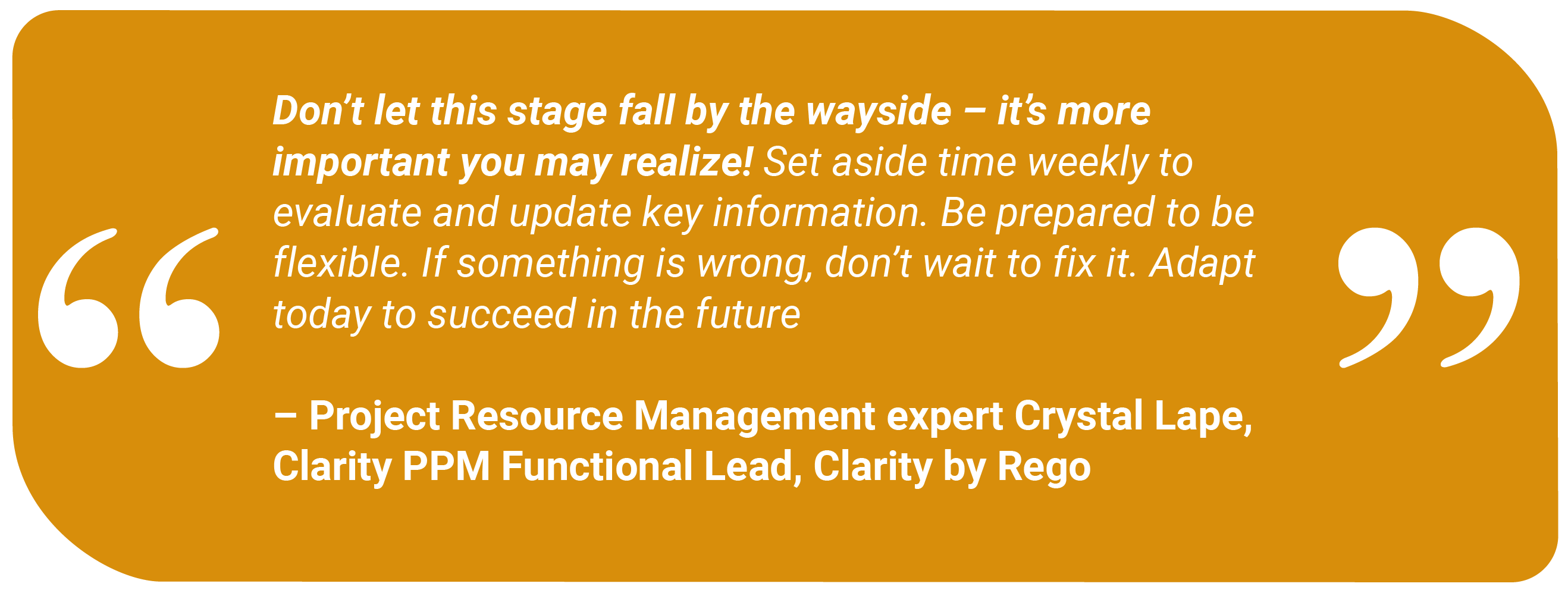
5. Closure Stage: Finish Strong
Congratulations! You’ve addressed all outstanding issues and reached the completion of your project deliverables. The formal end of project activities may include a documentation review, a resource release plan, knowledge transfer, and most certainly – team recognition.
Successful completion of this phase helps improve future projects, builds brand and stakeholder trust, and frees up resources.

Key Steps and Deliverables
Best Practice Questions for Project Managers
- Is all project information and reporting up to date?
- Have the financials been reviewed and closed out?
- Have stakeholders signed off on all deliverables?
- Who will be monitoring the project once it is closed? (For example, is there ongoing support? If something breaks, who fixes it?) How will this be communicated to the stakeholders?
- What are the lessons learned?
- What went well?
- What can be improved?
- Who can provide additional feedback / a fresh perspective?
- How can we apply lessons learned to future projects?
- How can we best celebrate our success and recognize everyone involved?
Expert Advice
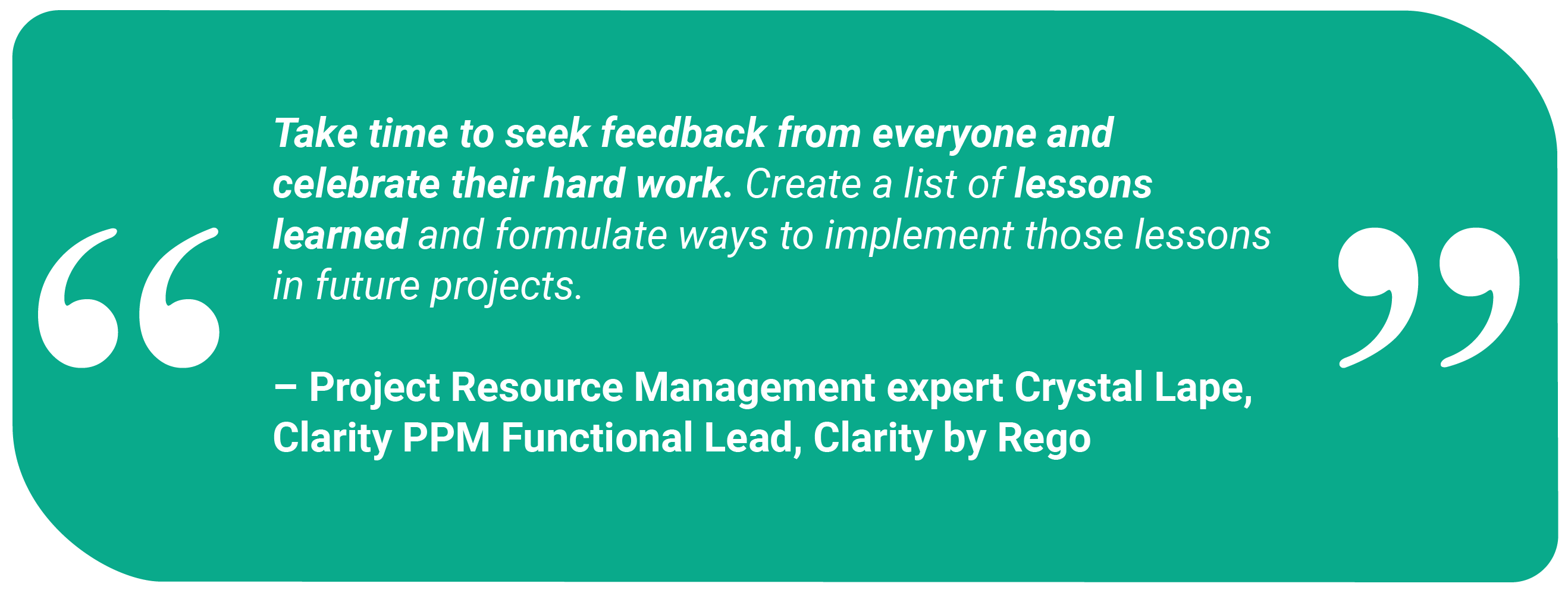
Conclusion: Deploy the 5 Stages of Project Management for Project Success
Successful projects follow a journey, from ideation to completion. The 5 Stages of Project Management provides project managers with a clear path to navigate the twists and turns of each stage: Initiation, Planning, Execution, Monitoring and Controlling, and Closure.

Mastering the 5 Stages of Project Management takes time and practice. Each project will bring a new challenge or learning experience – these are opportunities to improve your skillsets! Don’t be afraid to try new things, ask questions, and be curious.
Additional Resources
STAY IN THE LOOP
Get Notified of Updates.
Stay ahead of the curve by subscribing to our newsletter. Get the latest insights, strategies, and tools delivered straight to your inbox, and empower your business to achieve more.

